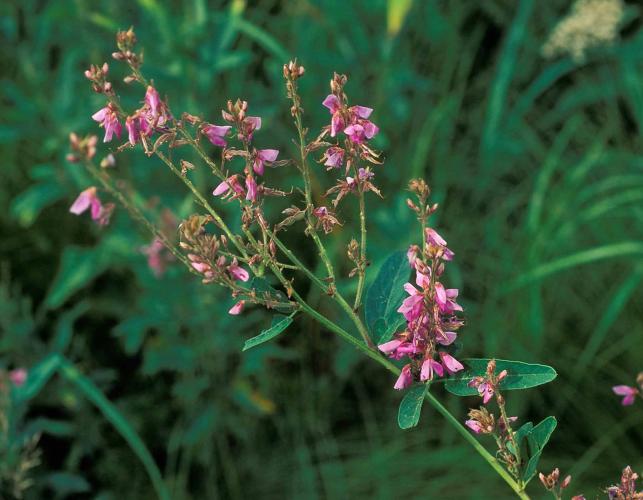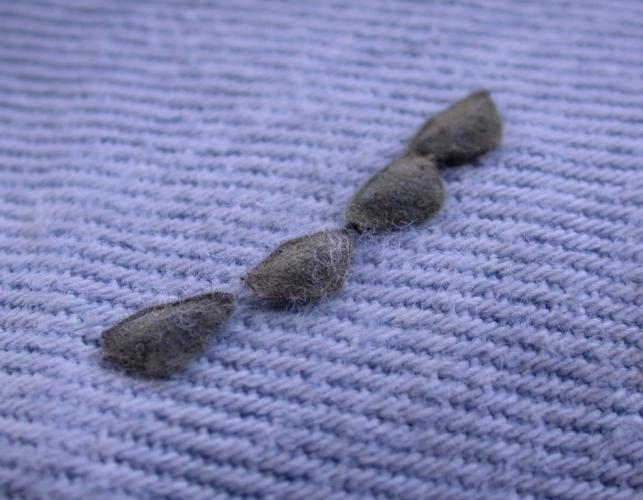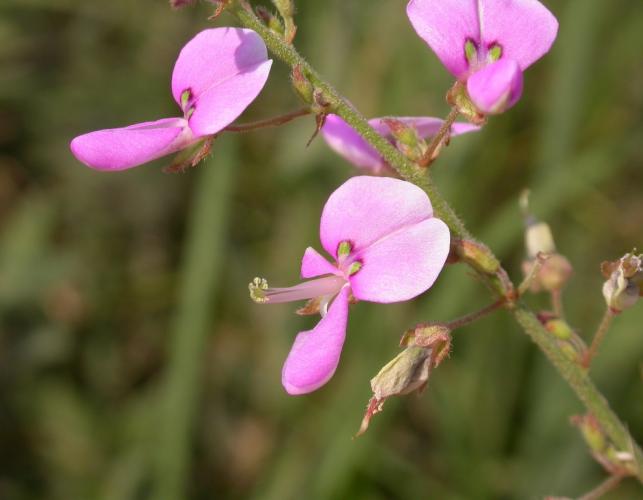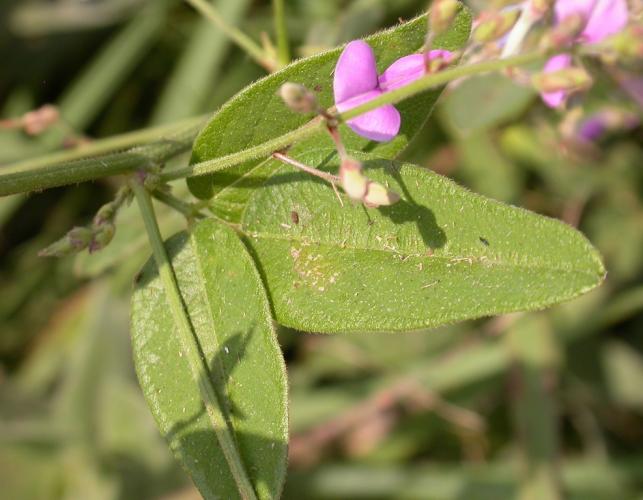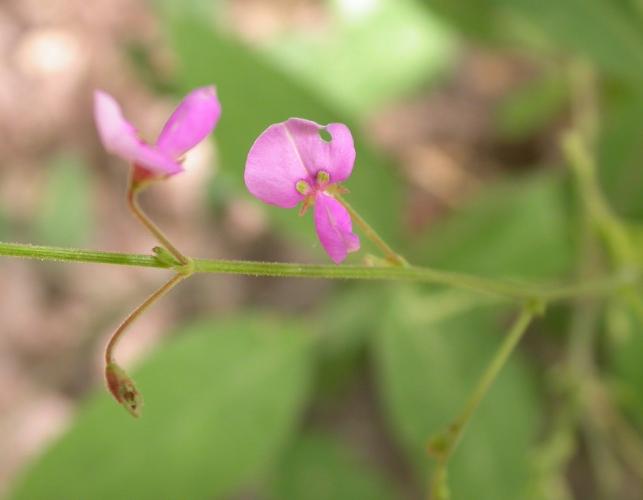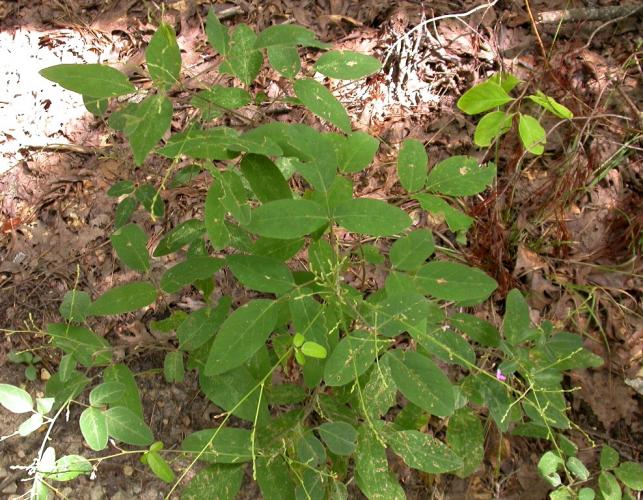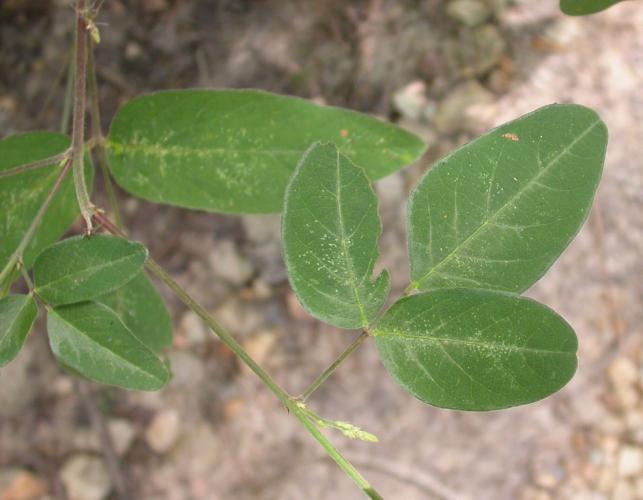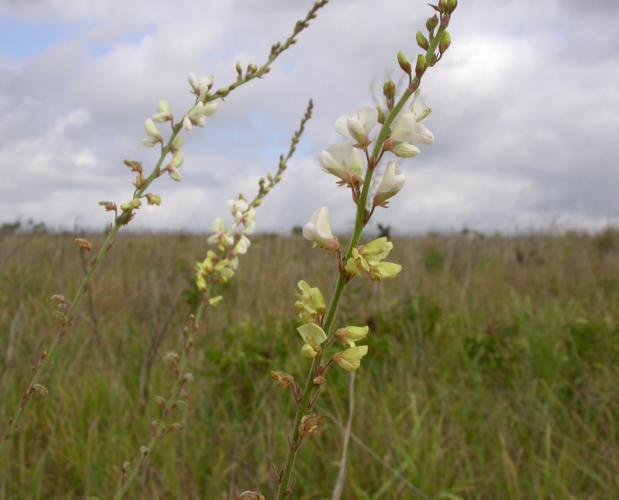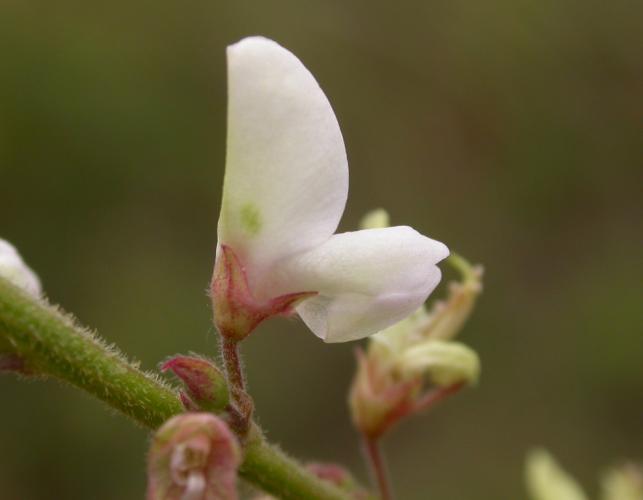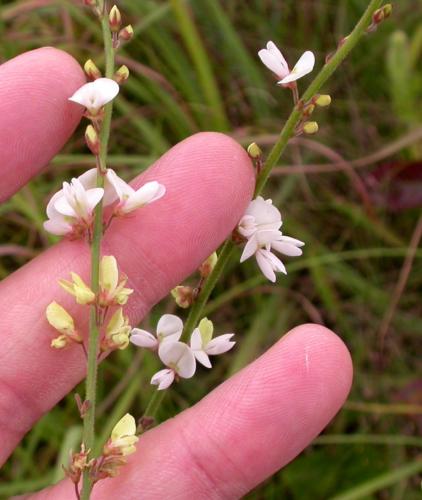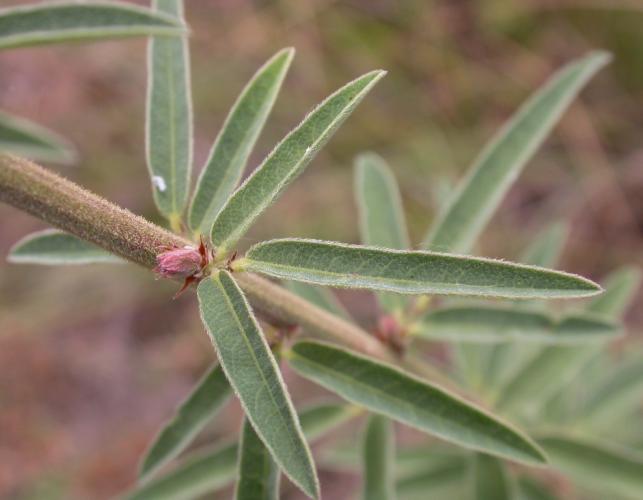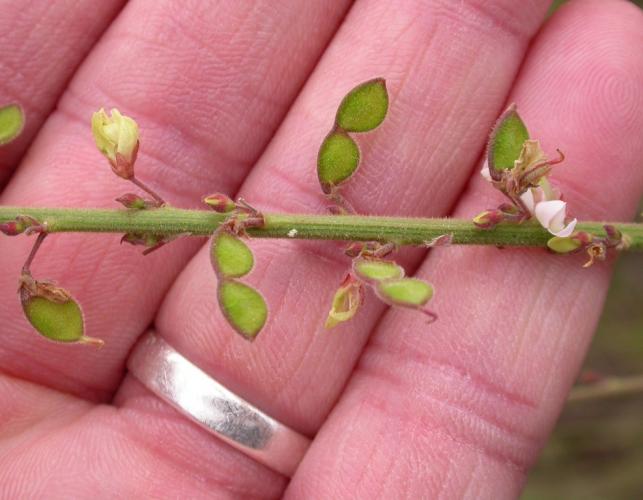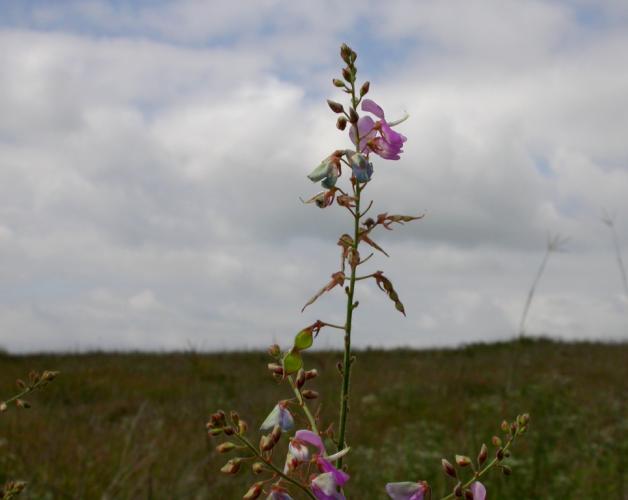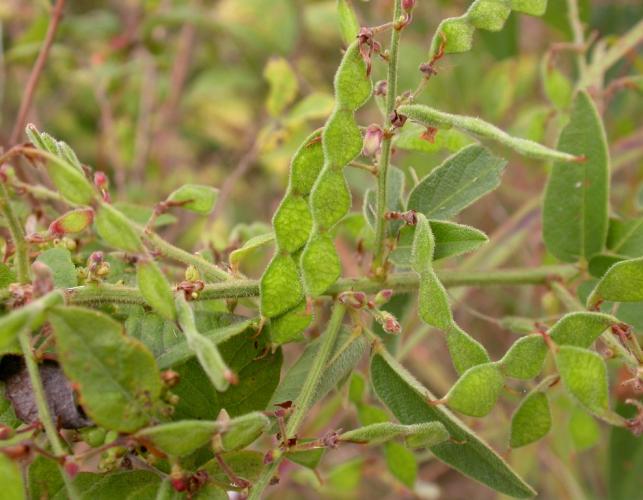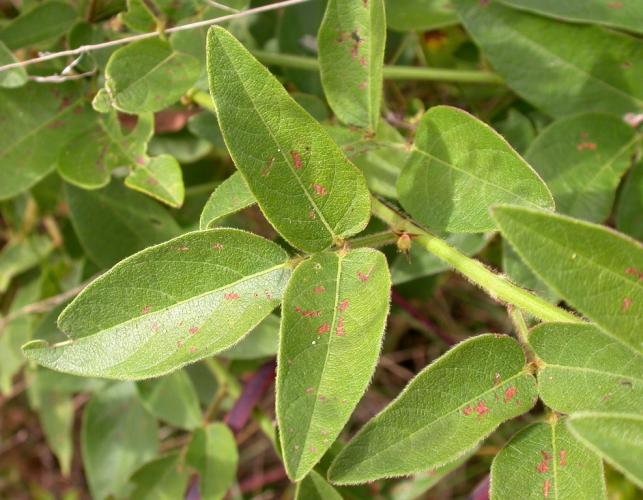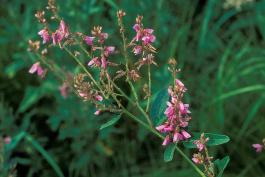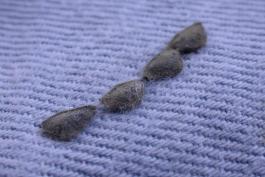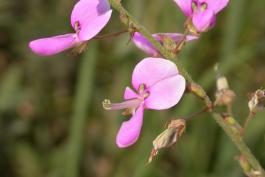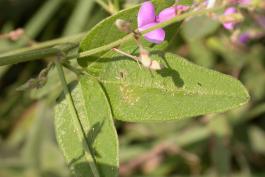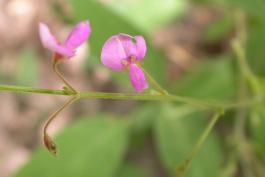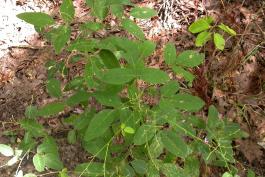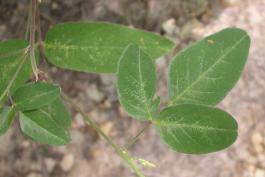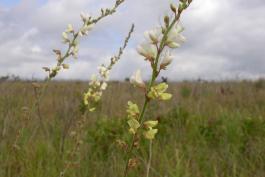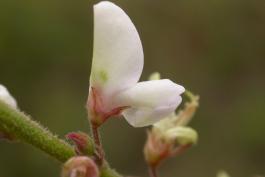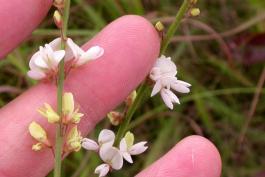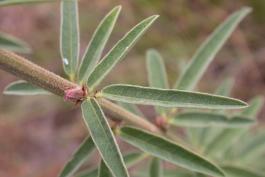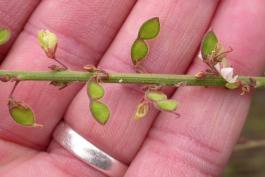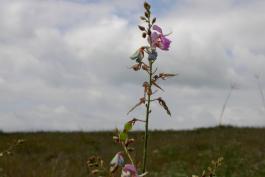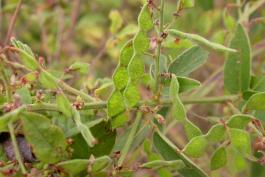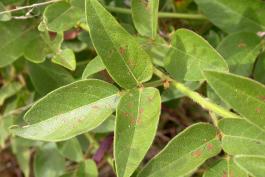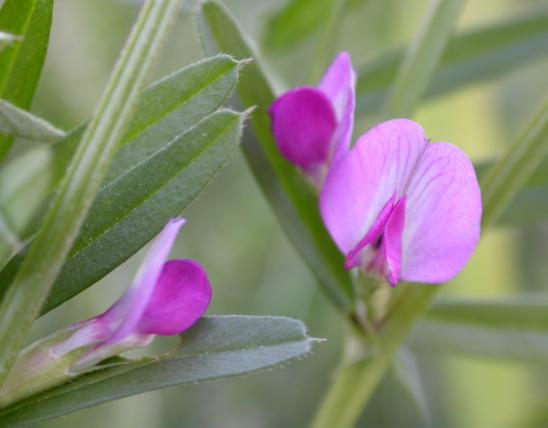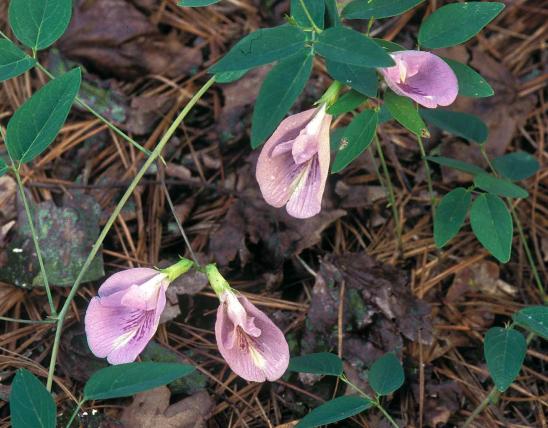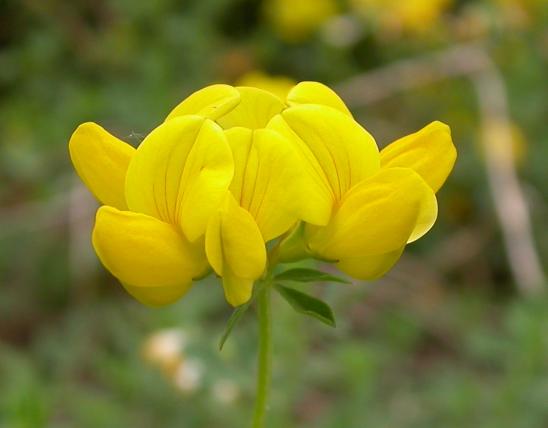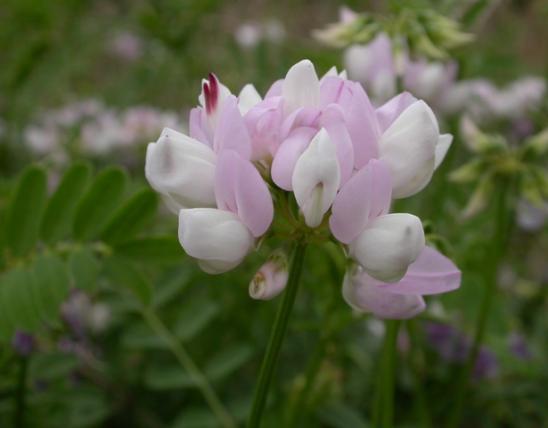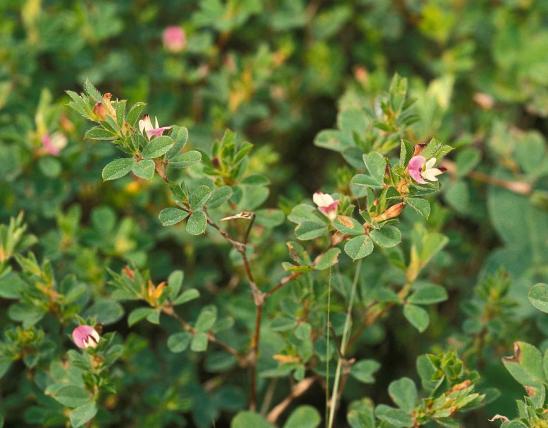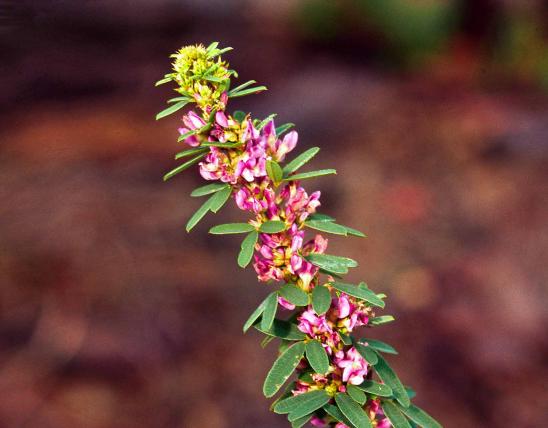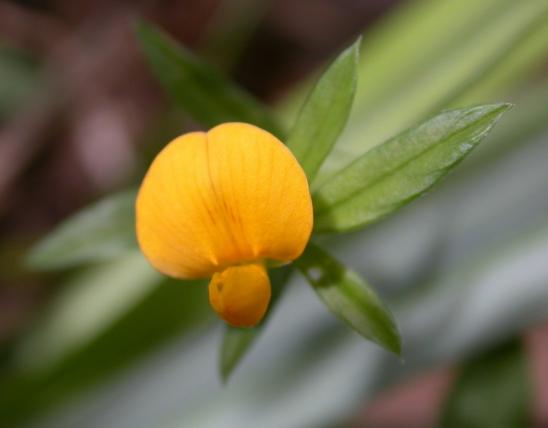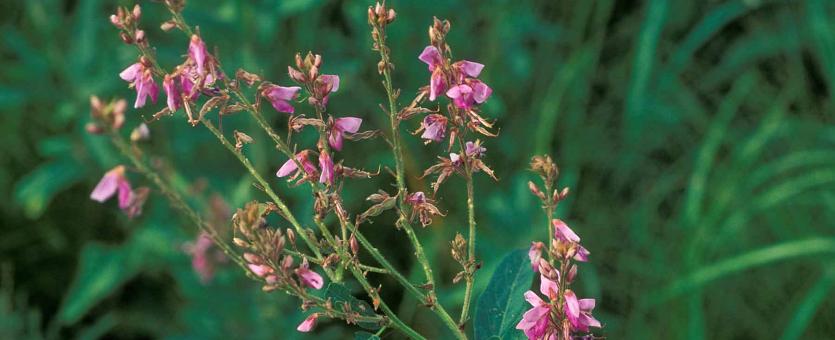
Missouri has 17 species of tick trefoils. Species identification is difficult and often depends on close analysis of the seedpods. The plants in this genus vary, with habits ranging from prostrate (lying on the ground) to erect stems. Flowers are usually in terminal racemes; pink, violet, or white; having the characteristic form of pea flowers. Blooming period is July–September, varying depending on species. Leaves are alternate, 3-divided, varying in shape and length of petiole, the lateral (side) leaflets usually on very short stems with the center leaflet on a longer stem. Fruit in distinct papery pods, which break up into 1-seeded segments that are dispersed by animals, including people.
Similar species: Three species that used to be in genus Desmodium are now placed in the genus Hylodesmum; they are different from desmodiums in several details of flower and fruits. For example, their fruits narrow markedly at their base, forming a stalklike shape, and the constrictions between the segments of the fruit are deep and very unsymmetrical. Despite their new genus name, they are still commonly called tick trefoils and sticktights.
Height: to 3 feet or taller.
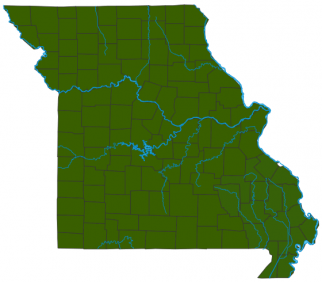
Each species has its own distributional range, though the genus is represented statewide.
Habitat and Conservation
Tick trefoils occur in variable locations, in open and forested places, depending on the species. The interesting fruits of tick trefoils are an example of a common “alternative” form of a bean-family pod: Although we’re all familiar with the “legume” form, like green beans, which split lengthwise into two long halves, tick trefoils have a bean-family fruit type called a “loment.” It's like a flattened chain of beads, splitting crosswise into multiple short, one-seeded segments.
Human Connections
The flattened, hairy pods stick to clothing and animal fur, hence the names “beggar’s lice” and “tick trefoil.” (“Trefoil” means “three-leaved.”) Some desmodiums are used in agriculture to repel insect pests, inhibit the growth of weeds, enrich the soil, and create fodder for livestock.
Ecosystem Connections
The plants of this genus are important browse for deer; the seeds are sustenance for many birds. The “sticky” fruits are an adaptation that widens the distribution of seeds from the parent plant: The seeds can be carried as far as an animal might carry them in its fur. This reduces inbreeding and increases the chance that at least some of the seeds will end up in a suitable habitat.
